Since 1981 SATELLITE has remained at the epicenter of innovation in the satellite and space community, where conversations spark action and deals between strategic partners are forged. We’re committed to continuing this legacy of bringing you unparalleled value with your SATELLITE registration and expanding your access to the leaders in the satellite community.
You can filter sessions by type, by registration pass, or by content topic with the options on the left. The sessions displayed will be a part of at least one option, so the more you select, the more you will see.
The growth rate of new space cyber threats and vulnerability will continue to track with the knowledge economy itself, doubling every two years. It will remain our Achilles heel if the requirements process to secure the cyber domain continue down the same traditional path. We must do better, and we can. Kicking off our SATELLITE 2023 Government and Military Forum, Charles Beames, co-founder and Chairman of the SmallSat Alliance and Executive Chiarman SpiderOak Mission Systems, will discuss the necessity for the U.S. to pivot towards a comprehensive cybersecurity plan immediately, the first step of which is to implement Zero Trust architectures (ZTA) across networks, and at the data level where possible. Zero Trust is a design philosophy that begins with a “trust no one” mindset to assure that soldiers in the field can safely receive the orders, coordinates, and intelligence they need to conduct military options.

The SATELLITE 2023 Tech Forum kicks off with the return of our CTO Roundtable – a top-level technological view into the future of satellite systems engineering. On this year’s panel, we’ve gathered CTOs from some of the most innovative space companies to share what they identify as key trends in system architecture and design and satellite device development. The speakers will also address: how their companies have evolved performance, analysis, verification, and validation processes; their strategies to reduce the cost of complex solutions; and how they are developing a pipeline of engineering talent in a competitive job market.
Most of the commercial space and satellite industry’s end-users don’t care about where, specifically, the satellites providing service are located in space, as long as they are delivering the performance, reliability, and security promised. That said, it is important for our customers to understand why their specific applications are better supported by spacecraft in specific orbits. This session aims to provide a clear and concise explanation and comparison of the characteristics of LEO, MEO, and GEO satellites – highlighting key similarities and differences. The goal is to cut through the industry speak and create more knowledgeable customers. Topics include: defining latency; how constellations and single satellite systems behave; comparative costs; and the benefits of multi-orbit systems.
The last three years have completely changed the nature and degree of threats to military space systems. COVID-19, supply chain issues, geopolitical tensions, the war in Ukraine, the volatile global economy, food and energy crises, space debris, and the development of anti-satellite weapons are all contributing factors that are increasing risks in space. During this session, our panelists will address the biggest present and evolving threats to military space systems. The discussion will also include debate on the effectiveness of technology solutions and strategic policy to protect government assets in orbit.
Executives, analysts, and thought leaders present a one-hour overview of the satellite industry’s financial health going into a challenging 2023 fiscal year. Panelists will examine the state of the satellite supply chain, including satellite builders, operators, launchers, distributors, and end-users, and identify the industry’s greatest opportunities for growth in providing connectivity, imagery, and managed services. Designed for attendees from all commercial, government, and industry markets, this session will give you insight on the satellite industry’s ability to keep costs low while developing complex solutions that are in demand.
Soviet Cosmonaut Yuri Gagarin’s 1961 orbital flight made him the first-ever person in space, kicking off the beginning of now over 60 years of human exploration beyond Earth’s atmosphere. As access to space has evolved, both sovereign and commercial human spaceflight expeditions from around the world are set to increase in number, diversity, and scale in the coming decade. From new long-duration platforms in LEO to suborbital flights for tourists and scientists alike, to multiple nations’ ambitions to return to the lunar surface, the next generation of human spaceflight is busier and more complicated than ever. Our conversation will center around what’s next as humanity seeks to create a more permanent presence further out in our solar system. Yuri said it best: “Poyekhali!” – “off we go!”
The United States recently released an updated military strategy for the Arctic region that highlights the need to maintain, refine, and advance “military presence in the Arctic in support of our homeland defense, global military and power projection, and deterrence goals.” This strategy requires enhancing capabilities such as domain awareness, positioning and communications and could lead to an increase in investments in satellite communications and Earth observation technologies. This session will explore how commercial space companies can help meet these Arctic region objectives for both the U.S. and its allied nations.

There is no air traffic control in space and no legal international framework to manage space traffic. The world currently relies on commercially provided “space situational” or “space domain” awareness data to track satellites, dangerous debris, and military action in space. The responsible use of space requires more than just wanting it. This session will start with explaining the importance of broad collaboration on space awareness and then highlight key advancements in space awareness and tracking capabilities, including advanced AI and machine learning algorithms. Speakers will also address the ramp-up in anti-satellite testing and explain the danger these events create for the entire space economy.

Today, the cellular wireless and satellite industries are finding their interests more closely aligned than ever before. Both are driven by the need to find new customers in rural/remote regions and both are largely embracing the 3GPP standard for 5G. Most importantly, both sides have existing infrastructure that, when integrated, can effectively build out envisioned 5G networks at reduced costs. Add to that the news that Apple and T-Mobile signed two milestone agreements last year to integrate satellite connectivity into their service plans, and suddenly, we start asking ourselves - is this the start of a new era for two sub-sectors of the largest telco industry that once operated in silos? Can satellite and cellular industry business models align along with the technology? How can satellite companies win business from a telco? During this session, leaders from both industries will answer these questions and engage in a debate over the benefits and challenges of this new working relationship.
Join us for this fascinating discussion and debate on whether or not the commercial space industry is fully utilizing computing capabilities to enhance their service offerings. With the rapid advancement of applications such as connectivity, data capture, processing, and storage, bringing advanced and autonomous computing in space is essential to supporting the mission of these applications. Learn about the technologies that space computing companies are eager to get into orbit, and understand the nexus between future computing trends and their application to the space industry.
Just as the space environment is a truly shared domain, SGAC is a truly international organization, representing students and young professionals in space from 160+ different countries. The International Norms and Behaviors panel brings together leading voices from sovereign space agencies and commercial actors in space exploration from spacefaring nations around the world. We hope that this discussion will be a timely reminder that as space becomes busier than ever, it’s our responsibility to understand the perspectives of operators from all nations so development in space continues to yield benefits for everyone on Earth.

We invite all conference attendees to join us for our exciting annual opening day keynote luncheon! This year, we’re honored to host Bessemer Venture Partners Partner and one of Forbes’ 30 Under 30 in Venture Capital Tess Hatch in a fireside chat with Former NASA Deputy Administrator Lori Garver, author of the new best-selling book ‘Escaping Gravity.’ The discussion will cover the future of space exploration, critical investments in commercial space technologies, recruiting and retaining talent, and how to tackle the issues and challenges addressed in her book. In addition to serving as NASA’s Deputy Administrator, Garver has held advocacy roles for space exploration as a member of the NASA Advisory Council, a guest lecturer at the International Space University, president and board member of Women in Aerospace, and president of the American Astronautical Society. She was awarded both the NASA Distinguished Public Service Medal, and the NASA Distinguished Service Medal.
Opening remarks by MDA CEO, Mike Greenley.
Humans love to launch objects into space. From massive, exquisite satellites and observatories, to crewed spacecraft and human-rated destinations, to proliferated constellations of small spacecraft, our busiest orbits are more crowded than ever. In fact, most data-driven predictions anticipate up to 100,000 operational satellites in space by 2030. In order to ensure space remains a safe, operable environment, it is imperative that all operators commit to responsible behavior in orbit and beyond. Today, commercial and sovereign actors alike are taking steps to advance capabilities that contribute to Orbital Sustainability through SSA (Space Situational Awareness), ADR (Active Debris Remediation), and more. This panel will examine what’s next in space sustainability, with a focus on the perspectives of commercial companies tackling these big problems
This session will bring representatives from NASA, ESA, the Australian Space Agency and other organizations together to outline their future needs for satellite technology and services, as well as upcoming opportunities for commercial partnerships. The speakers will provide updates on major ongoing programs and upcoming awards, and identify future-facing solutions they’ll need from the commercial sector.
Satellite imagery and data has the power to drive global change and influence critical decision making and long-term strategic planning. To do this, space data companies must sculpt and translate the massive amounts of data they collect into stories that their customers respond to and understand. This session will explain how commercial satellites assist key decision-makers in tackling issues like climate change, disaster impact, and economic development and how the companies that operate these satellites identify new problems they can solve through technological innovation.
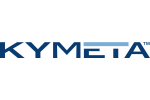
Connecting in-demand satellite service to cars, trains, transportation fleets, and other moving vehicles requires applicable “low profile” or “flat panel” antennas that are unobstructive and can securely mount while meeting clearance regulations. Historically, customers requiring these antennas have had to make performance trade-offs depending on the form factor. Are antenna developers at the point where they can offer these systems without sacrificing connectivity speed for the customer? Learn about the latest developments in conformal antennas that are constantly pushing the boundaries of what is achievable inside the limitations of physics.

Executives from the world’s largest satellite manufacturers gather each year at SATELLITE to outline their expectations for new business in the new year and answer tough questions from the community. This year’s roundtable will explore how manufacturers plan to use software to make future satellites more powerful, flexible, and secure and address questions about their ability to generate new business. Will small satellites continue to dominate the market? Is the business of building large GEO satellites sustainable in the long term? How can manufacturers keep costs low when faced with increasing supply costs and labor shortages? How do they plan to compete with the increasing number of space companies building their own satellites in-house? Don’t miss out on the valuable industry intel that has made the manufacturer’s roundtable a must-attend session for SATELLITE attendees.

Deep Space Exploration includes actions in space beyond our most local orbits – from CisLunar space, to Lunar surface activities, to exploration of other worlds in our solar system. Beyond sovereign space missions including NASA’s Artemis program and China’s expansion to the moon, many commercial capabilities have come online both to support these efforts and carry out activities of their own. This panel will focus on challenges around what it means to access deep space, how to conduct exploration in an ethical and sustainable manner, and a look toward the future of exploration far beyond Earth.
Today’s modern militaries and government agencies depend on an ability to leverage high-definition data for real-time decision-making. The surge in demand for complex, accurate, and multi-dimensional data is driving innovation in 3D mapping from space. During this session, you’ll learn about the complex network of systems, sensors, and satellites that are taking visual data to another level and helping end-users succeed in their critical missions on the ground.

Executive leaders from companies operating and building the largest small-satellite broadband constellations gather to share insights on the state of “unconnected” and “unserved” markets. Questions that will be addressed during this session include: Are rural broadband markets still as attractive now as they were when the economy was strong? What are the costs for the consumer? How fast will your service be in both optimal and worst conditions? Is your company diversifying its business by targeting b2b connectivity services? The panel will also address financing issues and returns on investment for building and replenishing constellation systems.
The $260 billion global market for industrial IoT (IIoT) is expected to swell to $1.1 trillion by 2028. That’s a clear sign that companies expect high value from this digital transformation of their operations. How can satellites help turn expectations into reality? This presentation will discuss how edge processing and smart devices deliver smarter data to the customer and how new technologies will enhance satellite IoT application development now and in the future. Speakers will also discuss how data edge processing is enabling partners, resellers, and manufacturers to develop more comprehensive solutions to improve logistics and bottom lines for their customers.
For the past decade, the success of Elon Musk’s SpaceX venture combined with the enthusiasm and financial backing of other celebrity entrepreneurs like Jeff Bezos and Richard Branson, has propelled a wave of capital investment into the space industry. Will this enthusiasm endure through a slower-than-expected economic recovery from COVID-19, a stock market crackdown on SPACs, more cautious government spending, and a potential future recession? Hear straight from investors on whether or not they can maintain the same volume of long-term space investments in a more challenging environment, as well as what they expect from new space companies as they mature through their “startup” phases.


SATELLITE 2023 is thrilled to announce that Amazon Senior Vice President of Devices & Services Dave Limp will be appearing as our featured keynote speaker at this year’s Opening General Session on Tuesday, March 14th, 2023 at 8:30 a.m. In a fireside chat interview, Dave will share important new details about Project Kuiper - Amazon’s low Earth orbit (LEO) satellite network, designed to provide fast, affordable broadband to unserved and underserved communities around the world. Be among the first to learn about Amazon’s next steps toward providing global connectivity from space! Join us at SATELLITE 2023!
The Tuesday Opening General Session is open to all SATELLITE 2023 attendees.

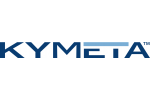
Powering a global network of connected and autonomous vehicles has been the long-time ambition for the satellite industry, which has worked hard to overcome the technical challenges related to rolling out the necessary infrastructure to support these high-tech applications. However, satellite technology developers now believe we have reached a transformational point in reaching the goal of connecting vehicles. Could recent advancements in low Earth orbit (LEO) satellite communications and advanced flat panel terminal technology finally unlock the potential to transform the automobile into a fully connected environment? Speakers on this session will answer this question and explain the wide-ranging economic impact of disruptive connected vehicle technology.
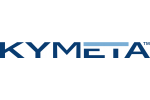
Building satellite antennas and ground systems has never been more technically challenging than it is today. Thanks to innovations like multi-orbit systems, broadband constellations, cloud integration, 5G and the drive to automate and orchestrate as much service delivery as possible to cope with all the complexity, ground systems companies are literally building the airplane while flying it. They are managing increased competition from all sides while creating bleeding-edge technology that serves the needs of today’s multi-layer connectivity businesses. In this CEO forum, leaders speak to the challenges to ground systems business models, and the rewards of somehow finding a way to realize new low-cost, compatible, and future-proof products.
The demand for environmental monitoring from space, especially the ability to track methane emissions in our atmosphere and monitor leaks, is surging. Many are turning to new hyperspectral and high-definition satellite imagery technologies that can help detect, measure, and track environmental changes with precision. This session will explain how hyperspectral and high-definition satellite imagery technologies work within Low Earth Orbit remote sensing systems. The discussion will include an overview of how these sensors work, comparisons to other remote sensing technologies, and a review of the range of new applications these technologies can support.
Join the Mobile Satellite Users Association (msua.org) for this year’s celebration of the most innovative satellite mobile technologies, solutions, and initiatives from around the globe.
The 2023 MSUA Satellite Mobile Innovation Awards winners will be revealed during the annual luncheon gala on March 14, 2023 from 11:45am to 1:30pm, at the Walter E. Washington Convention Center in Room 201 in Washington, DC during SATELLITE 2023. Keynote speaker, Antonio Franchi, Head of the 5G and 6G Strategic Program in the Telecommunications & Integrated Applications Directorate at the European Space Agency will present, The Next Decade Mobile Connectivity – Where Satellite and Cellular Converge.
Nominations are currently being accepted for:
Also, expect some surprise announcements during the 2023 awards luncheon!
The 2023 Satellite Mobile Innovation Awards judges panel includes:
Plan to join the MSUA for the annual luncheon gala on March 14, 2023, at the Walter E. Washington Convention Center in Washington, DC during SATELLITE 2023. Obtain tickets or sponsor the event.
Join WSBR on Tuesday, March 14, 2023, for their Annual Flagship Luncheon and Silent Auction, featuring Keynote remarks from Federal Communications Commission Chairwoman, Ms. Jessica Rosenworcel.
Networking and registration will begin at 11:00am, with lunch to be served at 12Noon. The program will conclude at 1:30 pm.
WSBR’s Annual Flagship Luncheon supports the Washington Space Business Roundtable’s Education Fund.
The spike in global video streaming traffic has put a tremendous strain on networks around the world and there’s no sign of slowing traffic in the near future. This has created a surge in demand for satellite backhaul services and while that’s good news for satellite service providers, it comes with challenges. The backhaul customer’s expectations are very high and getting higher as applications become more complex. Satellites are also now expected to cover greater distances with backhaul services. Can today’s satellites meet the challenge and carry the burden, or even exceed those expectations and do more heavy lifting on the front end? This session will feature perspectives on satellite backhaul from the executives who lead today’s top providers and those who depend on backhaul to support their own businesses.
The demand for launching small satellites is obviously growing thanks to pipeline of constellations and multi-satellites waiting to reach orbit. This demand has sparked a vast expansion of the small satellite launchers industry, bringing several new entrants into the market. However, access to space isn’t getting any easier. Along with increased competition, smallsat launchers face limited access to launchpads, supply chain issues, increased risks of space congestion, and the need for a policy framework to help enable multiple mega-constellations. This session addresses those challenges and features a discussion between small satellite launch company executives on how they are keeping access to space viable for their smallsat customers.
In order for ground systems to keep up with the rapidly evolving space segment and prevent bottlenecking innovation, some argue that a new approach is needed to synchronize space and ground layers into a unified space network – one that takes full advantage of software virtualization, cloud computing architectures, and software-defined networking technologies. In this proposed approach, satellites and the ground operate in tandem as a real-time integrated system, driving coordinated change to services in minutes – not hours, days or weeks. Can this approach help satellites networks better align with terrestrial networks during a critical time when both are expected to converge? Learn about the benefits and challenges associated with unified software-defined networks, as well as virtualization and cloud native communications technologies.

Spectrum and orbital resources are critical to all space service providers, yet too little attention is paid to these issues until it is too late to influence them. This panel will focus on US spectrum/orbital issues affecting the satellite, new space, and launch communities, such as pending FCC rulemaking and licensing proceedings that will directly impact the future of the space industry in the US. Current open issues include preserving satellite spectrum (such as 12 GHz); sharing requirements for new LEO constellations; new spectrum allocations to support commercial space launches, and spectrum and rules for new space services such as rendezvous and proximity operations.
Many of today’s regional satellite operators have enjoyed tremendous success within the markets they dominate. They are deeply entrenched in government, broadcast, and local enterprise connectivity – a relationship built on long-standing contracts and a deep understanding of local needs. Their main competitors are global operators, who are deploying larger, complex, and more threatening multi-orbit constellations. The CEOs on this session will explain how they’ve prepared to compete with constellations in the long term and provide high-quality, low-cost services that evolve and remain attractive to their customers.
The “cell tower in space” concept has captured the imagination of the telecommunications industry. Not long ago, direct communication between cellphones and satellites were limited to specific hardware and low data-rate applications. Now, satellite companies have been able to test and achieve internet connections between Low-Earth Orbit satellites and regular consumer cell phones and are planning to roll out services through partnerships with major carriers. This session aims to clear up the mystery surrounding how these direct space-to-cell connections work. Speakers will outline how they expect these connections to perform in certain conditions indoors, outdoors, and in vehicles.


Erwin Hudson – Telesat (VP Product Development)
Peter Hadinger – Inmarsat (CTO)
Frederik Simoens – ST Engineering iDirect (CTO)
Henry Kongevold – MARLINK (Chief Engineer)
Utpal Bakshi (Moderator) – Sasken Technologies Limited (CCO)
The Space & Satellite Hall of Fame recognizes the invaluable contributions of the visionaries who transform life on planet Earth for the better through space and satellite technology. Members of the Hall of Fame are recognized pioneers in satellite communications, earth observation, launch services, spacecraft technologies and applications, in-space operations, space law, space education and space science. Newly inducted members of the Hall of Fame will receive their medals in an inspiring ceremony, followed by an elegant reception with plenty of time for networking. This event is run by Space & Satellite Professionals International (SSPI) and requires separate registration from SATELLITE 2023. By invitation only. Click here to register: https://www.sspi.org/events/2023-space-satellite-hall-of-fame-medaling-ceremony-reception
Date & Time: March 14 at 6:30 PM - 8:30 PM ET
Location: K&L Gates, 1601 K Street, NW, Washington, DC
In our industry’s history, few satellite content connectivity providers are as established as SES. With over 70 satellites in two different orbits, SES provides TV to 1 billion people globally, bandwidth to 7 of the world’s 10 largest telcos, and delivers secure network services to 58 national governments. This puts SES at the epicenter of SATELLITE’s community of exhibitors and attendees.
Steve Collar, Chief Executive Officer of SES, has been a mainstay of the SATELLITE Conference and Exhibition, providing thought leadership to SATELLITE’s opening general session panel for many years. This year, with the rapid integration of today’s space and terrestrial connectivity infrastructure happening, attendees will hear directly from one of the most respected business leaders in our community about how SES is enabling connections around the world and shaping the future of the commercial space industry.
The Wednesday Opening General Session is open to all SATELLITE 2023 attendees.



This session focuses on two laser communications technologies that are taking the space industry by storm. First, we will look at optical inter-satellite terminals designed to route massive amounts of information between globe-spanning networks of interconnected satellites with minimal delay. Our panel will explain how the size, weight, and power requirements of these laser terminals will better equip satellite constellations to support applications of the future. The session will also cover developments in space-to-ground laser communications, which are designed to provide reliable connectivity between fast moving objects with low power usage, low sensitivity to vibration, and a high level of security. Is laser technology a replacement for or complement to existing RF communications? Are lasers controllable and secure? Learn the answers to these questions directly from the leaders in the laser tech field.
There’s a lot of excitement in the cutting-edge world of smallsats, where manufacturing is constantly evolving to meet the increasing demand for a growing space economy. During this session, executive leaders from the fastest growing smallsat companies share insights and predictions about the long-term stability of the smallsat market, its value chains, its latest and upcoming technological developments – including size, weight and power reduction. The panel will also cover the benefits and challenges of bringing manufacturing, delivery, and mission management services under one roof, creating one-stop shops for customers.
The rollout of 5G networks creates more opportunities for businesses to leverage the internet of things (IoT). For businesses located in areas not served by terrestrial networks such as those in the mining, farming, and energy sectors, communication satellites can provide the vital links you need to connect your employees and machines. Satellite IoT services save lives, time, and money for any business running complex logistics, or operating a fleet of vehicles, or managing mobile crews. Most importantly, it has a low cost of entry. This panel will explore these and other significant benefits that satellites can provide to connected b2b markets.

Join us for a keynote speech from U.S. Department of Commerce Deputy Secretary Don Graves, followed by the presentation of Via Satellite Magazine's Satellite Executive of the Year and Technology of the Year Awards, as well as the reveal of the Startup Space 2023 Pitch Competition Winner!
Open to all SATELLITE 2023 conference-level attendees.

3D-printing technology, or additive manufacturing is both a cost-saving innovation on Earth and the cornerstone to building the infrastructure needed for deep space exploration. Speakers on this session represent companies that are employing bleeding-edge 3D-printing technologies to build everything from rockets, to satellites, to entire space stations. Learn about the power and performance of 3D-printed spacecraft to reach and operate in the harsh orbital environment.
The satellite industry made a significant advancement in the world of 5G when satellites became included in the 3GPP standard for narrowband services such as voice and IoT. This inclusion received industry-wide support across the cellular industry – from the chipset manufacturers and infrastructure players to the mobile operators. Can this success with narrowband be replicated in higher frequency bands that satellites use to deliver broadband internet? What will it take to make 5G-over-satellite mainstream? Is it all smooth sailing for satellite 5G? Or do the unknowns surrounding challenges like spectrum allocation create risks for satellite companies? Get the very latest reality-check on technology developments and opinions on market timing from our panel of 5G satellite experts.
Antenna manufacturers have invested a lot of time and money in drastically broadening the capabilities of their products to connect to satellites in multiple orbits over a wide range of bandwidth. During this session, antenna developers will share what they’ve learned throughout their quest to defy the limitations of physics and how understanding those limits helped them focus their product development strategies around customer needs. The discussion will also highlight important ground segment design considerations of multi orbit / multi-frequency modems, amplifiers and the intricate smart control systems required to make these next-generation systems work in space and on the ground.
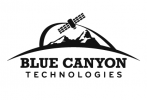
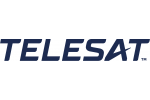

Earth observation satellites can capture complex data that can essentially be molded and shaped to answer an infinite range of questions. Some imagery satellite operators aim to sell this data to enterprise markets to help them save businesses time, money, and resources. These operators make decisions about which industries they will target based on the strength of use cases – evaluations of their data in action, solving real industry challenges. This session will present some of the latest use cases from leading imagery and sensing companies, highlighting new applications for private industries, including energy, healthcare, agriculture, insurance, transportation, and mining.
There’s never been a more dynamic, exciting, and more complicated market environment for today’s leading launch services. On the one hand, demand for access to space has never been higher and despite increased competition from new entrants, there’s plenty of business to go around. And, there’s still room more low-cost launch alternatives. On the other hand, supply chain issues and labor shortages have created a manufacturing bottleneck, and the crowded race to orbit has caused some concern about the environmental impact of launching both on Earth and in orbit. During this session, executives from the leading launch service providers will share how they plan to differentiate themselves from the competition with new launch vehicle offerings, meet their customers’ needs for extreme flexibility, and explain how they are helping the industry maintain a safe orbital environment.
Unified by a widespread acceptance of the 3GPP mobile standard, satellite operators and cellular carriers have been working together to create greater integration and coexistence between networks. The goal is complete interoperability between terrestrial networks and LEO, MEO, and GEO satellites to enhance 4G and 5G services. This session will give attendees an overview of the technical progress that has been made on this intergration, specifically with a focus on interoperability with new, non-3GPP based LEO systems, and legacy government and military systems, supported by standardization use cases.
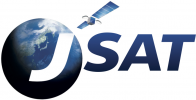
Gaetano Morena, founder and CEO of Gomedia Satcom explain how to offering world-leading Mobile Satellite Services with up to 150 Mbps, fully integrated through the customers application environment with a high degree of security for customers such as Defence Organizations, Emergency Service Organizations and Non Governmental Organizations. To even more improve the customers effectiveness, Gomedia is expanding its presence as a top level and sought-after provider in order to run its technology, with its 50 000 square meter Gomedia will operate as one of the largest Satellite Teleport Facilities in Europe.
By invitation only, contact pr@terranorbitalcom
Join Terran Orbital to celebrate the induction of their first satellite – PropCube – into The Smithsonian National Air & Space Museum Permanent Collection.
Integrating commercial satellites in hybrid architectures can create powerful, affordable connectivity service. However, this integration can also introduce new vulnerabilities to cyber-attacks. During this session, our panel of cyber security experts will share their views on whether new cyber and data integrity safeguards and tools that satellite companies can be implemented to protect systems without significantly impacting service downlink speeds. The discussion will include an overview of technologies like autonomy, on-board processing, and quantum key distribution (QKD).
This session will explore the evolution of ground systems that is making satellite services easier to use, more powerful, more portable, and more reliable for the warfighter. Discussion topics for this session include: enabling technologies to support low-SWAP (size, weight, and power) applications; the increasing use of modular design for milsatcom hardware; multi-orbit and network interoperability; anti-jamming capabilities; cloud integration; and encryption.
All tech industries are experiencing a post-COVID labor shortage, but the space industry is especially vulnerable to the negative impact of being short staffed. First, building satellites and rockets requires skillsets that are in very high demand and in short supply. Rising living costs makes it difficult for smaller space companies to maintain young professionals on staff who, statistically, are more likely to hop between companies in order to get the salary they require. Because timelines are tight in the space industry, the employees who do stay are working overtime, all of the time, which leads to burnout. Labor shortages are more than just an “HR” challenge for the space industry. They are now directly impacting companies’ bottom lines and ability to generate new revenue. During this session, you’ll learn how some space companies are taking new and effective approaches to talent recruitment, retention, and re-training in order to build a stable and happy workforce.
Leveraging Artificial Intelligence can achieve operational value and advantage in similar ways for both the largest business organizations in the world and government and military organizations. This session will present examples of successful AI, Machine Learning, and space technology deployments to support critical missions such as JADO/JADC2. Speakers will also address the risks and security threats associated with AI/ML-enhanced operations
The rise to meet the challenge of space congestion and debris combined with the attention that space sustainability issues are receiving from policy-makers in government has created a “green sector” within the satellite and space industries. This sector is made up of both start-ups and legacy companies that are investing in technologies such as in-orbit servicing, refueling, debris removal, and space situational awareness. But these companies can’t provide sustainability if they don’t have sustainable business models and shrewd public awareness and policy strategies. During this session, executives from these green sector companies will explain how they are generating the revenue and financing they need to achieve their greater mission and make a positive impact on the environment.
Radio frequency (RF) interference can create major issues for satellite network infrastructure on the ground, particularly now that the space environment is becoming more and more crowded. The lowering cost of space applications and systems as well as their increasing capabilities in the 5G era have led to strong rivalry for the total amount of spectrum that is now available. Is the satellite industry ready to combat interference with the same energy it uses to pursue growth? Join us for a discussion identifying the technologies and anti-jamming techniques that are currently at our disposal and which tools we’ll need to develop as space gets more crowded.